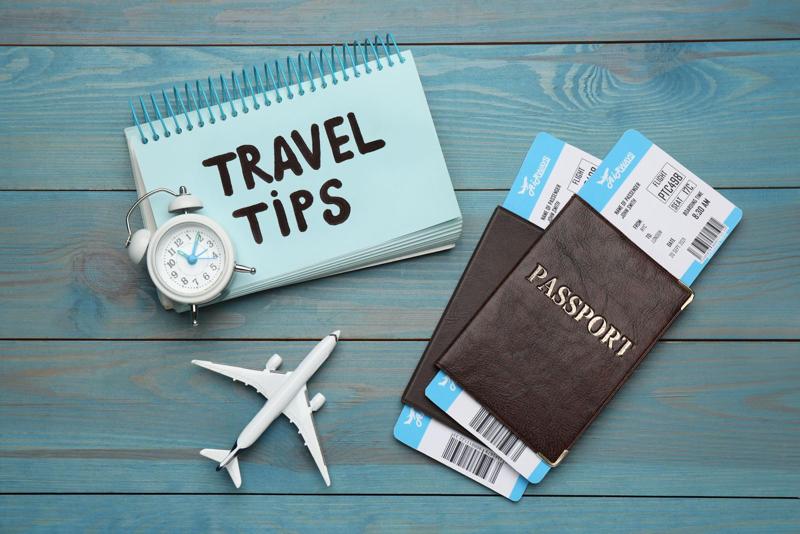Italy is a dream destination for international travelers, offering a captivating mix of history, culture, and natural beauty. From the ancient ruins of Rome to the romantic canals of Venice, and the stunning landscapes of Tuscany, this country has something to offer every type of traveler. With its rich heritage and world-renowned cuisine, Italy is a place where dreams come true.
The allure of Italy lies in its ability to transport visitors back in time. The country’s cities are like open-air museums with their well-preserved historical sites and architectural wonders. From the iconic Colosseum in Rome to the breathtaking art collection at the Uffizi Gallery in Florence, there is no shortage of cultural experiences to be had.
But Italy is not just about its famous cities; it also boasts hidden gems off the beaten path. Picturesque coastal towns like Cinque Terre and Amalfi offer breathtaking views of the Mediterranean Sea, while the charming villages of Umbria invite you to experience authentic Italian life. Whether you’re exploring well-known destinations or venturing into lesser-known regions, Italy promises an unforgettable journey filled with unique moments.
So get ready to immerse yourself in the beauty and charm of Italy as we guide you through essential tips for international travel. From researching and planning ahead to understanding local customs and traditions, we’ll ensure that your trip to Italy is smooth, safe, and full of incredible memories. So pack your bags, leave your worries behind, and embark on an adventure that will leave a lasting impression on your heart.
Research and Plan Ahead
When planning a trip to Italy, it is crucial to research and plan ahead to ensure a smooth and enjoyable experience. Gathering necessary travel information, understanding visa requirements, and familiarizing yourself with local customs will help you make the most of your time in this beautiful country. Additionally, creating an itinerary that covers must-visit cities and attractions will help you maximize your time and see everything on your wish list.
One of the first steps in preparing for your trip to Italy is gathering essential travel information. Start by checking the visa requirements for your country to determine if you need a visa or if a passport will suffice. It’s also important to check the validity of your passport as some countries require at least six months’ validity beyond the planned date of departure.
Currency exchange is another important aspect to consider. Italy uses the euro as its official currency, so it is advisable to exchange some local currency before arrival or withdraw money from ATMs once you are in Italy. Be aware of common scams in touristy areas related to currency exchange and always verify exchange rates before making any transactions.
While researching, take the time to learn about local customs and etiquette. Italians often take pride in their culture and traditions, so it’s essential to be respectful when interacting with locals. Learning basic Italian phrases can also go a long way in breaking down language barriers and enhancing your experience overall. Additionally, it is helpful to download translation apps on your phone for quick translations on-the-go.
Once you have gathered all the necessary information and insight into local customs, begin planning your itinerary. Italy offers an array of stunning cities and attractions that deserve attention, such as Rome, Florence, Venice, and Milan. Determine which cities are on your must-visit list and allocate enough time in each location to fully explore its historical landmarks, iconic sights, and unique experiences.
By researching thoroughly and planning ahead before embarking on your trip to Italy, you can ensure that all necessary preparations are in place. This will contribute to a more seamless adventure filled with unforgettable memories and the opportunity to immerse yourself in the cultural heritage that Italy has to offer.
Travel Documents and Safety
When traveling to Italy, ensuring you have all the necessary travel documents is essential for a smooth journey. Here are some tips to help you navigate this process successfully:
Obtaining Passports and Visas
Before embarking on your trip to Italy, make sure to check that your passport is valid for at least six months beyond your planned departure date. If it’s not, be sure to renew it well in advance. Additionally, determine whether you need a visa to enter Italy based on your nationality. Visit the official website of the Italian Ministry of Foreign Affairs or consult with your local consulate for updated information on visa requirements.
Travel Insurance
It’s strongly recommended to purchase travel insurance before heading to Italy. This will provide coverage for medical emergencies, trip cancellations, lost luggage, and other unexpected situations. Research different insurance providers and policies to find one that suits your needs and budget.
Safety Tips
While Italy is generally a safe country for travelers, it’s always important to take precautions and stay alert. Here are a few safety tips to keep in mind:
- Keep copies of important documents such as your passport, visa, and travel insurance in separate locations from the originals.
- Be cautious of pickpockets in crowded tourist areas by keeping your valuables secure and using bags with anti-theft features.
- Familiarize yourself with emergency contact numbers for the local police, hospital, and embassy.
Remember that unforeseen circumstances can happen during any trip, so it’s better to be prepared in advance.
Language and Communication Tips
In a country where the primary language is Italian, it is helpful for international travelers to have some knowledge of basic Italian phrases and an understanding of how to overcome language barriers. This section provides valuable tips on effective communication strategies and cultural sensitivity when interacting with locals in Italy.
Learn Basic Italian Phrases
Learning a few key phrases can go a long way in facilitating communication with the locals. It is recommended to familiarize yourself with common greetings, polite expressions, and basic vocabulary related to transportation, directions, shopping, and dining. Simple phrases like “hello,” “please,” “thank you,” and “excuse me” are always appreciated by Italians and can help create positive interactions.
For those who prefer a more comprehensive approach to learning the language, taking basic Italian language classes before your trip or using language learning apps can be beneficial. By making an effort to communicate in their native tongue, you will not only enhance your travel experience but also earn respect from the locals.
Utilize Translation Apps
In addition to learning basic phrases, having a translation app on your smartphone can be incredibly useful when facing more complex conversations or unfamiliar words. Popular translation apps include Google Translate and Microsoft Translator which offer real-time voice translation as well as text translation features.
When using translation apps, it is important to be patient and allow time for accurate translations. Communication may still involve some back-and-forth clarification, so maintaining a friendly and understanding attitude is key.
Be Culturally Sensitive
Cultural sensitivity plays an essential role in overcoming language barriers in Italy. Italians value personal connection and non-verbal forms of communication such as gestures and body language. They often use animated hand gestures while speaking to emphasize certain points or convey meaning.
When attempting to communicate with locals who may not understand English very well, using simple words combined with clear gestures can help facilitate understanding. It is important to maintain a respectful and patient attitude, as language barriers can sometimes be frustrating for both parties involved.
By embracing Italian customs and adopting effective communication strategies, international travelers can navigate language barriers with ease, foster positive interactions, and immerse themselves more fully in the captivating cultural experience of Italy.
Money Matters
Italy is a beautiful country with a rich cultural heritage and a popular destination for international travelers. However, when visiting Italy, it’s important to be prepared when it comes to managing finances and navigating the local currency. In this section, we will provide valuable information on Italy’s currency, how to handle money while traveling, and tips on avoiding common scams.
When traveling to Italy, it’s essential to familiarize yourself with the euro (€), as it is the official currency of the country. It is recommended to exchange some currency before your trip and have cash on hand for smaller expenses like transportation or paying at local businesses that may not accept credit cards. While credit cards are widely accepted in larger cities and tourist areas, it’s always good to have some cash available.
| Money Exchange | Notes |
|---|---|
| Exchange Currency Before Arrival | It’s advisable to exchange some cash before arrival for immediate expenses. |
| ATMs | ATMs are readily available in most Italian cities and provide convenient access to euros. |
| Credit Cards | Credit cards are commonly accepted in hotels, restaurants, and shopping centers; however, bring cash for smaller establishments or rural areas. |
| Tourist Scams | Avoid street vendors offering black-market exchange rates or pickpockets operating in crowded tourist areas. |
To budget your expenses effectively, consider researching average prices for accommodations, dining out, transportation costs before your trip. This will help you plan your expenditure accordingly and avoid overspending. Additionally, be aware of common scams targeted at tourists, such as unofficial tour guides or street vendors offering black-market exchange rates. Stay vigilant and use reputable businesses for currency exchange or seek assistance from your hotel concierge.
Transportation Tips
Suggested modes of transportation
When it comes to getting around Italy, travelers have a variety of options to choose from. One of the most convenient and popular modes of transportation is the train system. Italy has an extensive rail network that connects major cities and towns, making it easy to explore different regions. Trains are known for their efficiency and punctuality, and they provide a scenic way to travel across the country.
Buses are another common mode of transportation in Italy, particularly for reaching destinations that are not well-served by trains. They offer flexibility and often operate on routes that connect smaller towns or rural areas. Travelers can find both long-distance buses for intercity travel-to-cuba/” target=”_blank” rel=”follow noopener”>travel and local buses for getting around within a city or town.
For those who prefer more independence and flexibility, renting a car can be a good option. Driving in Italy allows travelers to explore remote countryside areas and small villages at their own pace. However, it is important to note that driving in Italian cities can be challenging due to narrow streets and limited parking.
Navigating the transportation system
To make the most of Italy’s transportation system, it is essential to familiarize yourself with schedules, ticketing procedures, and other useful tips. Most train tickets can be purchased online or at train stations, but it’s advisable to book in advance during peak tourist seasons. It’s also worth considering purchasing regional passes or discount cards if you plan on extensively using public transportation within a specific area.
When using buses, tickets are usually bought directly from the driver upon boarding. Be sure to have cash ready as exact change may be required. In some cases, bus tickets can also be purchased at local tobacco shops or bars.
It’s always helpful to download public transportation apps specific to the cities you will be visiting. These apps provide real-time information on schedules, routes, and any service disruptions or delays. Additionally, they often include interactive maps that make navigating the transportation system much easier.
Tips for using public transportation
Using public transportation in Italy can be straightforward with a few key tips. Firstly, remember to validate your ticket before boarding the train or bus. Validation machines are typically located on platforms or inside buses, and failure to validate may result in fines.
When it comes to trains, be aware of different types of services. Regional trains make frequent stops and are ideal for short journeys between nearby towns, while high-speed trains like Frecciarossa or Italo offer faster travel times between major cities. Make sure to check for any seat reservations required for specific train services.
Finally, it’s important to be mindful of pickpocketing and personal safety while using public transportation. Keep an eye on your belongings at all times and avoid displaying valuable items unnecessarily. Be cautious when traveling during crowded periods and consider using bags that can be worn securely across your body.
By taking advantage of Italy’s transportation options and following these tips, travelers can navigate the country with ease while enjoying the beautiful landscapes along the way.
Cultural Etiquette
Italy is a country rich in cultural traditions and customs that are deeply ingrained in the daily lives of its people. As a visitor, it is essential to be aware of and respect these cultural norms to ensure a positive and enjoyable experience. This section will introduce readers to Italian culture, including dining etiquette, dress codes, and social norms.
When it comes to dining in Italy, there are certain etiquettes that should be followed. Firstly, it is important to remember that dinner is typically the largest meal of the day for Italians, so be prepared for multiple courses and leisurely meals. Additionally, it is considered impolite to ask for substitutions or modifications to dishes as Italian cuisine prides itself on using fresh and locally sourced ingredients.
In terms of dress codes, Italians tend to dress more formally than people in some other countries. It is customary to dress smartly when visiting churches or religious sites. Women should avoid wearing clothing that exposes too much skin such as mini skirts or low-cut tops in these places. It is also worth noting that beachwear should only be worn at the beach or poolside.
Interacting with locals can be one of the highlights of a trip to Italy, and understanding some common social norms can help facilitate positive interactions. Greeting people with a warm “buongiorno” (good morning/day) or “buonasera” (good evening) is polite and appreciated. It is also customary to shake hands when meeting someone for the first time or when saying goodbye.
Understanding and respecting Italian traditions and customs will not only show appreciation for the country’s culture but also help visitors navigate social situations smoothly during their time in Italy.
| Dining Etiquette | Dress Codes | Social Norms |
|---|---|---|
| – Expect multiple courses during meals | – Dress smartly when visiting churches and religious sites | – Greet people with “buongiorno” or “buonasera” |
| – Avoid asking for substitutions in dishes | – Avoid wearing revealing clothing in religious sites | – Shake hands when meeting someone for the first time or saying goodbye |
Must-See Destinations
Italy is a country rich in history, art, and culture, making it a dream destination for international travelers. From the iconic cities of Rome, Florence, and Venice to lesser-known towns and regions, there are countless must-see destinations throughout Italy. In this section, we will explore some of these places and provide insights on key attractions, historical landmarks, and unique experiences that will make your trip to Italy truly unforgettable.
1. Iconic Cities:
- Rome: Known as the “Eternal City,” Rome is a treasure trove of ancient ruins like the Colosseum and the Roman Forum. A visit to the Vatican City is a must, where you can admire St. Peter’s Basilica and the Sistine Chapel with its famous frescoes by Michelangelo.
- Florence: Considered the birthplace of the Renaissance, Florence is home to incredible art and architecture. Marvel at masterpieces like Michelangelo’s David at the Accademia Gallery or Botticelli’s Birth of Venus at the Uffizi Gallery. Don’t forget to cross Ponte Vecchio and explore Oltrarno for an authentic Florentine experience.
- Venice: This enchanting city built on water is unlike any other in the world. Take a gondola ride along the Grand Canal, visit St. Mark’s Square with its stunning Basilica and Doge’s Palace, or get lost in Venice’s maze-like streets to discover hidden gems away from the tourist crowds.
2. Hidden Gems:
- Cinque Terre: Located on the Italian Riviera, Cinque Terre consists of five picturesque fishing villages perched on cliffs overlooking turquoise waters. Hike along scenic trails between villages or relax on pebbled beaches while savoring traditional Ligurian cuisine.
- Sorrento: Situated along Italy’s beautiful Amalfi Coast, Sorrento offers breathtaking views of rugged cliffs dropping into crystalline waters below. Explore the charming old town, visit nearby Capri and Pompeii, or sample limoncello – a local liqueur made from the region’s lemons.
- Bologna: Often overlooked by tourists, Bologna is a vibrant city known for its medieval architecture and culinary traditions. Climb the Asinelli Tower for panoramic views, wander through Europe’s oldest university, and indulge in delicious regional specialties like tortellini and mortadella.
In addition to these recommendations, don’t be afraid to venture off the beaten path and explore the lesser-known regions of Italy. From Puglia’s stunning coastline to Sicily’s rich history and unique cuisine, there are endless hidden gems awaiting discovery throughout the country.
Delicious Italian Cuisine
Italy is renowned for its rich and diverse culinary traditions, making it a paradise for food lovers. From mouthwatering pasta dishes to delectable pizza creations, Italy offers a gastronomic experience like no other. When visiting Italy, indulging in the local cuisine is an essential part of immersing oneself in the country’s culture.
Exploring Italian Cuisine
Italian cuisine varies greatly from region to region, with each area having its own specialties and traditional dishes. For example, in the northern regions of Italy, you can savor creamy risottos and hearty polenta dishes. In central Italy, you’ll find delectable pasta dishes like carbonara and amatriciana. And in the south, you can feast on fresh seafood delights and traditional Neapolitan pizza.
To fully appreciate the flavors of Italian cuisine, don’t miss out on trying regional specialties. Each town or city often has its own signature dish that is worth exploring. For instance, try Bologna’s famous ragù sauce (Bolognese sauce) or Florence’s succulent Florentine steak.
Hitting the local food markets is another great way to immerse yourself in Italian gastronomy. These vibrant markets offer not only a wide variety of fresh produce but also street food stalls where you can sample local delicacies such as arancini (rice balls), fried calamari, or porchetta sandwiches.
Tips for Dining Out in Italy
When dining out in Italy, it’s important to be mindful of local customs and etiquette. Here are some tips to enhance your dining experience:
- Make reservations: Popular restaurants can get crowded quickly, so it’s wise to make reservations beforehand.
- Know the meal structure: Italians usually have a light breakfast (colazione), a leisurely lunch (pranzo), and dinner (cena) in the evening. Many restaurants close between lunch and dinner, so plan your meals accordingly.
- Try aperitivo: Aperitivo is a pre-dinner drink accompanied by small snacks. It’s a great way to socialize and whet your appetite before the main meal.
- Don’t rush: Italians enjoy long, relaxed meals. Take your time, savor each bite, and enjoy the company of friends or family.
- Show appreciation: After a satisfying meal, it’s customary to leave a small tip, usually around 10% of the bill total.
Italy’s culinary landscape is a treasure trove of flavors waiting to be discovered. Whether indulging in a classic pasta dish or relishing regional specialties, exploring Italian cuisine is an unforgettable experience that will leave your taste buds dancing with delight. So make sure to come hungry when you visit Italy to fully appreciate its gastronomic delights.
Packing Tips
When preparing for a trip to Italy, it is crucial to pack wisely in order to ensure a seamless and stress-free experience. Here are some essential packing tips to consider before embarking on your Italian adventure:
- Weather-appropriate Clothing: Italy experiences a range of climates, so it’s important to check the weather conditions for your travel dates and pack accordingly. Lightweight and breathable clothes are ideal for the hot summer months, while warmer layers are necessary for colder seasons or regions.
- Comfortable Shoes: Italy is known for its cobblestone streets and beautiful historic sites that require lots of walking, so make sure to bring comfortable shoes that provide good support. Opt for sneakers or comfortable sandals that you can walk in all day without discomfort.
- Sightseeing Essentials: Don’t forget to pack the necessary items for sightseeing and exploring. A lightweight daypack is essential for carrying essentials such as a water bottle, sunscreen, camera, map or guidebook, and any other personal items you may need throughout the day.
Aside from these essentials, there are a few additional items to consider bringing along:
- Electrical Adapters: Italy uses type C or F electrical outlets with 230V electricity. Make sure to bring adapters suitable for these socket types if you plan on charging electronic devices.
- Portable Chargers: Keep your devices charged on the go by bringing a portable charger or power bank.
- Reusable Water Bottles: Stay hydrated while reducing plastic waste by carrying a reusable water bottle. There are many public drinking fountains in Italy where you can refill your bottle throughout the day.
Remember that when packing for any trip, it’s best to pack light and only bring what you truly need. This will not only make traveling more convenient but also leave room in your suitcase for any souvenirs you may want to bring back home from Italy.
By following these packing tips, you’ll be well-prepared to enjoy every moment of your trip to Italy without any unnecessary hassles or inconveniences.
Conclusion
In conclusion, a trip to Italy is sure to provide unforgettable memories and leave a lasting impression. With its rich cultural heritage, stunning landscapes, and delectable cuisine, Italy is truly a dream destination for international travelers.
Throughout this article, we have provided valuable tips and insights to help make your trip to Italy as smooth and enjoyable as possible. From researching and planning ahead to understanding transportation options and respecting cultural traditions, we have covered all the essential aspects of traveling in Italy.
By following the tips outlined in this article, you can ensure that you make the most of your time in Italy. Whether you choose to explore the iconic cities of Rome, Florence, and Venice or venture off the beaten path to discover hidden gems, each destination offers its own unique experiences and attractions.
Embrace the Italian experience fully-try authentic dishes from different regions, interact with locals using basic Italian phrases or translation apps, and take the time to soak in the rich history and traditions of this beautiful country.
So pack your bags, get ready for an adventure, and create lasting memories in Italy. As you embark on your own international travel journey to this captivating country, remember that immersing yourself in the charm of Italy will surely leave an indelible mark on your heart.
Frequently Asked Questions
How do I prepare for a flight to Italy?
To prepare for a flight to Italy, there are several important steps to follow. Firstly, ensure that you have a valid passport with at least six months validity before your departure date. It’s also crucial to check the visa requirements based on your nationality and the duration of your stay in Italy. Research and book your flights well in advance, comparing prices and airlines to find the best option for you.
Pack appropriate clothing and essentials for the weather and activities you plan to engage in while in Italy. Familiarize yourself with the local customs, language basics, and any specific cultural norms or etiquette that may be different from what you’re accustomed to. Finally, make sure to inform your bank of your travel plans, ensure your travel insurance is up-to-date, and have all necessary documents easily accessible during your journey.
How can I make the most out of my trip to Italy?
Making the most out of a trip to Italy involves careful planning and consideration of personal interests and preferences. Start by researching the various regions in Italy to determine which ones align with your desired experiences—whether it’s exploring historic sites in Rome or Florence, enjoying the beautiful coastline of Amalfi or Cinque Terre, or indulging in culinary delights in Tuscany or Emilia-Romagna. Take time to learn about local customs, traditions, and history beforehand; this will enrich your understanding and appreciation of what you encounter during your visit.
Try to balance iconic tourist attractions with off-the-beaten-path discoveries by venturing into lesser-known neighborhoods or taking day trips outside major cities. Be open-minded when it comes to trying new foods; experiencing Italian cuisine is undoubtedly an integral part of any trip to Italy. Finally, take moments throughout your journey to simply relax and soak in the atmosphere—whether it’s enjoying cappuccino at a local café or watching a sunset over the Mediterranean Sea.
What do Americans need when traveling to Italy?
When traveling from America to Italy, there are several essential items Americans should have prepared beforehand for a smooth trip. Firstly, ensure that your passport is valid for at least six months beyond your return date, as this is a requirement for entry into Italy. Americans do not need a visa for stays in Italy up to 90 days, but if you plan to stay longer or have specific purposes such as work or study, you may need to apply for additional visas or permits beforehand. It’s important to have comprehensive travel insurance that covers all your needs, including medical emergencies and trip cancellations.
Familiarize yourself with the transportation systems in Italy, such as trains or buses, and consider purchasing tickets or passes in advance for convenience. Other essentials include having a universal power adapter, carrying some local currency (euros), and ensuring any essential medications are easily accessible during the journey. Finally, it’s always advisable to register with the U.S. Department of State’s Smart Traveler Enrollment Program (STEP) before traveling abroad so that you can receive important updates and assistance if needed.

I’m a passionate traveler, writer, and Italophile. My fascination with Italy’s history, art, and culture has led me on countless adventures across the Italian landscape. Through “I Live Italy,” I share my love for this extraordinary country and aims to inspire others to explore its boundless beauty.





